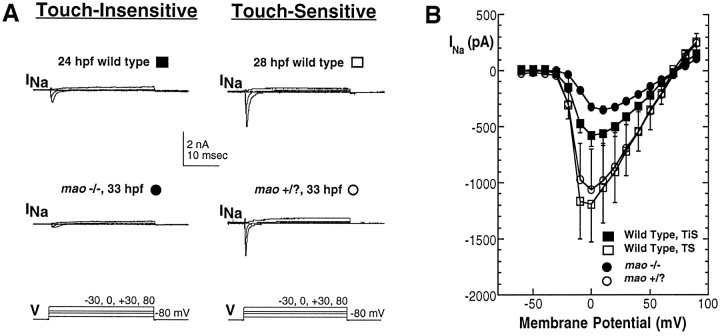Fig. 7.
Sodium current of Rohon–Beard cells increases in wild-type, but not mutant, embryos during the period of acquisition of touch sensitivity. A, Whole-cell sodium currents recorded in response to a series of depolarizing voltage steps. Data were obtained from neurons in a 25 hpf wild-type embryo that was not yet touch-sensitive (top left), a 27 hpf wild-type embryo that did respond to touch (top right), a 28 hpfmao homozygous embryo that did not respond to touch (bottom left), and an unaffected sibling that was touch-sensitive (bottom right). B, The current–voltage relationships for INarecorded from Rohon–Beard neurons of touch-insensitive [either 24–26 hpf wild-type (n = 10; filled squares) or mao homozygous (n = 15; filled circles)] versus touch-sensitive [either 27–33 hpf wild-type (n = 4; open squares) or mao unaffected siblings (n = 4; open circles)] embryos are different in amplitude but otherwise appear similar. The cells that were analyzed for this figure were limited to those in which the voltage error caused by series resistance was estimated at ≤10 mV (see Materials and Methods). TiS, Touch-insensitive;TS, touch-sensitive.

